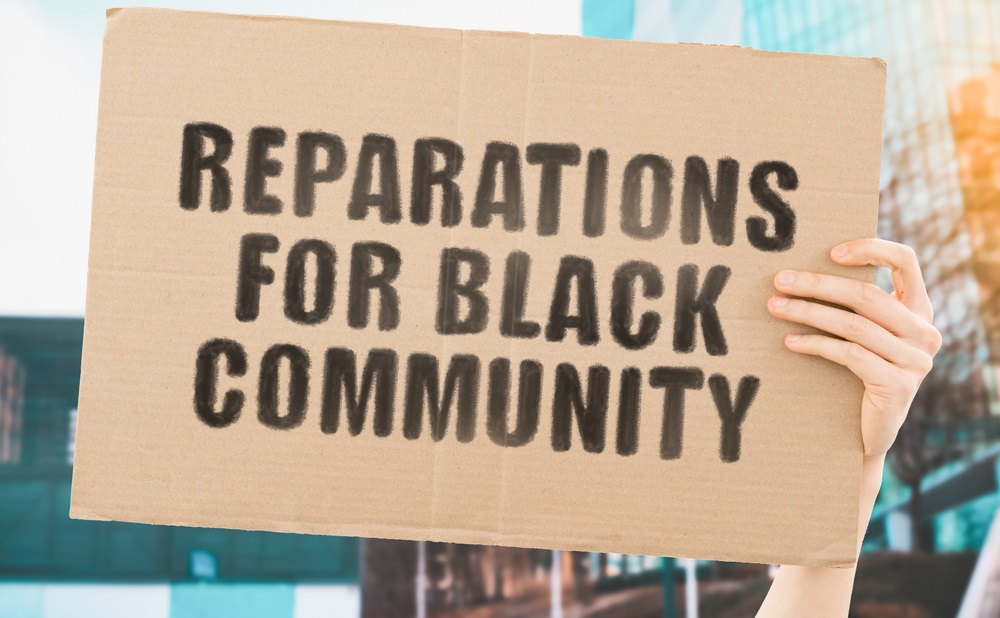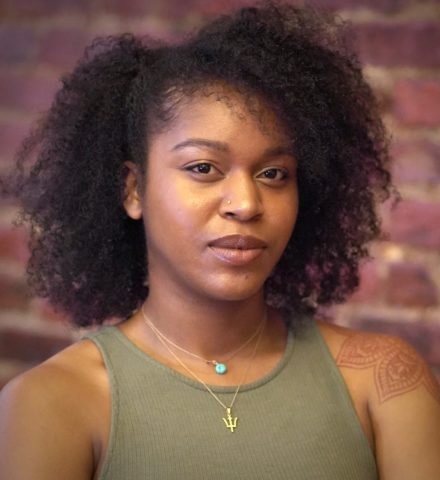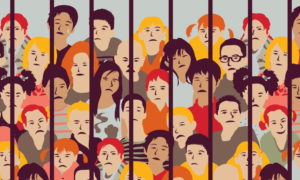 ANDRIIKOVAL/SHUTTERSTOCK
ANDRIIKOVAL/SHUTTERSTOCK
Imagine building a house on unstable ground and then only working to address the cracks in the walls, uneven floors and leaking roof, all symptoms of a faulty foundation. Many contractors would find this unreasonable, if not dangerous.
Yet that is essentially what we have done in the United States. After having built our nation’s house on unstable ground, we have stubbornly clung to the irrational idea that all we need to do is fix the resulting, cosmetic issues. In doing so, we have begun to use restorative justice as one of those “easy fixes,” to the detriment of both the practice and the communities asked to participate in it.
The practices and approaches the Western world today refers to as “restorative justice” have roots in indigenous, including indigenous African, peacemaking and ways of being in community. While the term has been popularized in recent years, there is limited mainstream understanding about what it actually is. Restorative justice is first and foremost about “relationships,” the ways in which we create, nurture and mend them. Most often, restorative justice is referred to in the context of addressing harm, specifically, ways to create spaces that, in the wake of traumatic events, allow for accountability and healing.
There is a growing movement across the U.S. of people using restorative justice to respond to harm occurring in our communities. Some schools, for example, have adopted restorative justice approaches to shift away from their reliance on police and zero tolerance disciplinary practices that have functioned as a way to criminalize childhood and trauma.
Entire cities and counties have made similar changes as they have begun to reject the notion that we must label, punish and incarcerate people in order to achieve “public safety.” Instead, places like Oakland, California, and Nashville, Tennessee, have implemented precharge, restorative justice diversion programs that center the needs of individuals harmed by crime and supports those who are responsible in accepting accountability. Through these processes, rather than filing charges against people who have committed serious offenses (i.e. felonies and high-level misdemeanors), prosecutors send their cases to community-based organizations.
Restorative justice stabilizes toxicity
Those organizations prepare and facilitate face-to-face meetings between the person(s) harmed, person(s) who caused harm and their loved ones. These meetings culminate in a consensus-based plan to support the responsible person in making things as right as possible. Once they complete the plan, the case is closed with no charges having ever been filed.

Sia Henry
Based on indigenous, Māori conflict-resolution practices, which Aotearoa (aka New Zealand) has adopted as the default response to youth wrongdoing, this model of community-held restorative justice diversion has worked in the U.S. A recent, randomized controlled trial has found those who complete a precharge, restorative justice diversion process are four times less likely to “recidivate” or cause more harm. Moreover, these programs have a 91% satisfaction rate among persons harmed and are a fraction of the cost of the current criminal legal system.
Everyone wins, right? Well, maybe.
There is a danger in restorative justice being used as a way to stabilize, if not legitimize, traditionally racist and toxic systems. For instance, local and state governments have spent public resources on lengthy studies to tell them what they and we already know: Our schools and criminal legal systems have been insidious, violent and traumatizing spaces, especially for Black and Indigenous people, throughout the history of this country.
In response to these “findings,” some schools create positions for restorative justice specialists and some criminal legal systems launch restorative justice diversion programs. System actors then sit back and celebrate, boxes checked and programs and positions created.
What are we really doing, though, when we situate restorative justice approaches in incredibly harmful institutions without dismantling those overarching systems of oppression? To be clear, restorative justice is not just a program, another tool to make youth, Black folks, transgender people, etc., those whom society is afraid of or mad at, “act right.” It is not a “rehabilitative” mechanism. Oftentimes, when people talk about “rehabilitation” what they are really seeking is assimilation and compliance.
Settlers owe accountability
Again, at its core, restorative justice is about relationships, teaching us how to nourish the symbiotic nature of human existence by collectively living in societies where everyone belongs. As conflict is a natural (and potentially healthy) part of any relationship, restorative justice also shows us how to support one another in being accountable when harm occurs. It follows, then, that if we are truly committed to this practice, we cannot simply take restorative justice models and drop them into communities, arbitrarily deciding whose harm matters, and where in the long history of harm caused in this country we are going to begin to ask for accountability. That is neither restorative nor just.
In their chapter “Undoing the First Harm: Settlers in Restorative Justice” from the book “Colorizing Restorative Justice,” Edward Valandra and Waŋbli Wapȟáha Hokšíla challenge “settlers and others” working in restorative justice spaces to undo the “First Harm,” the theft of Indigenous North American homelands and the “Second Harm,” the theft of Indigenous African labor. These harms persist “as long as settlers continue to ignore … [them], all the while benefiting from” them. Valandra and Hokšíla add that “[e]quity — constitutional, racial, or otherwise — will never be the answer to undoing these harms: equity not only leaves the settler structure unchallenged but also reinforces it with mountainous benefits that come with leaving harms” unrepaired.
Reuben Miller from the University of Chicago put this in other terms while speaking on a recent panel: “we stripped entire populations of their innocence beginning with the colonial encounter where Black people, who weren’t a people at all, were all lumped together and we said ‘you’re Black, you’re undifferentiated, you’re naked, you’re godless, you’re guilty’ … so we operate on this notion of innocence and guilt when we’ve stripped entire populations, Black people, Latinx people … Indigenous people … gender-nonconforming people … we’ve stripped them of their innocence and then we put them in the system and say ‘prove your innocence.’” If they are unable to prove their innocence, we expect their accountability.
Valandra and Hokšíla make clear that “[a]bsent reparative actions, restorative justice’s credibility among Indigenous Peoples and People of Color will continue to implode.” And while restorative justice has promise, they do not see how it “can fulfill its promise as long as you [settlers] turn a blind eye to the one massive harm that predicates all the rest and that has made you as a group believe that wrongdoing can stand as your society’s foundation.”
In order for us as a society to realize the full potential of restorative justice (and, really, in order for this country to move forward in any truly positive way), we must finally acknowledge and address those first harms. Civil rights attorney and restorative justice practitioner Fania Davis has already written about the nation’s need for a Truth and Reconciliation Commission (TRC) to address our history of violence against African Americans.
Valandra and Hokšíla caution, however, that some of the handful of nations that have created TRCs have focused on storytelling without incorporating a process to repair or undo harm. Meanwhile, other TRCs, like the one in Canada, have involved reparations but were state-determined and geared toward absolving settlers of further responsibility for the harm rather than on building relationships and community between settlers and Indigenous peoples.
Reparation plan needed for U.S. society
The United States cannot afford any more cute and symbolic yet empty gestures masquerading as attempts at reconciliation. And while people often nod resignedly when someone declares “change takes time,” I argue that over 500 years (since the first white settlers arrived in America) is time enough.
Let us, then, allow restorative justice to live up to its promise and use it to create spaces for us as a nation to finally tell the truth, the whole truth, about our past and present. In doing so, let us seek to fully understand the theft, violence and genocide Black and Indigenous people have survived throughout the centuries (for we are not and have never been “victims” or “vulnerable”).
Let us ensure these conversations permeate our schools, encouraging Black and Indigenous youth to learn about, love and celebrate everything they are and the wonderfully powerful lineages they come from. But, we must not stop there. As righting wrongs is a cornerstone of restorative justice, we must then allow Black and Indigenous people, descendants of the “First” and “Second Harms” to lead processes to identify the needs that have resulted from those harms and create a reparative plan for our society to make things as right as possible.
Lastly, let us divest from our insidious obsession with surveillance, punishment and slavery (i.e., police, prosecutors and prisons) and invest the adequate resources needed to bring about the timely completion of that reparative plan. This is not an à la carte menu; we must do all of these things.
This renovation project is long overdue. Our house will only continue to flood, crack and sink until we finally rebuild our unstable foundation. Otherwise, we risk restorative justice teaching people to be OK with and take responsibility for their oppression.
Sia Henry is a senior program specialist with Impact Justice’s Restorative Justice Project. She is an attorney, abolitionist and Harvard Law School graduate.































